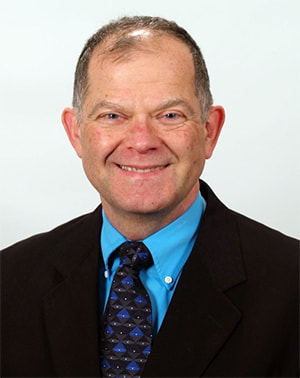 Don Dinero
Don Dinero Please share a little bit about your life and journey and how you came to work in the field of business operations and continuous improvement.
I can’t say that I arrived here by any plan because when I started I knew little about the business world. My undergraduate degree is in mechanical engineering, so that led me to an engineering position. Although I was trying to focus on design, I kept being drawn into manufacturing. Although I did not realize it for many years, I seem to have an affinity for understanding processes. Combine that with a persistent questioning attitude and continuous improvement is a natural result.
In addition to that, I enjoy learning and believe that I can never know too much. I obtained an MBA because I wanted to understand how businesses operate and I was fortunate working for a wide variety of companies. My career started at a medium sized company where I was able to see how the entire organization (production, finance, sales, etc.) works and with departments interacting. I also worked at two large companies (Burroughs and Kodak) where the perspective is different and so you learn different aspects of the organization. I obtained my second master’s degree in human relations/organization development so I had an opportunity to study the human side of organizations.
How do you define business operations and continuous improvement for the day-to-day well-being of middle market and large companies?
Both business operations and continuous improvement should be viewed and acted upon on two levels. The broader or macro level is the responsibility of senior management, while the operational or micro level is everyone else’s responsibility. Senior management must decide upon the company’s direction and the best way to get there. Buggy whips are necessary if you are driving a horse and carriage, but there are not too many horse driven carriages any more. Reducing production of buggy whips and moving your effort to another area may seem obvious now, but it was not so obvious in 1900. Public pay telephones were ubiquitous but they have been replaced by the mobile phone. It is senior management’s responsibility to decide that we’re no longer the Acme Screw Company but now we are the Acme Fastener Company.
The remainder of the organization has two main responsibilities. Each person should perform his or her job to the best of their ability and they must also strive on a continual basis to improve whatever it is they are doing. Continuous improvement must be managed well because when someone changes what he is doing in one area, it most often affects another person in another area. The objective is not for just one person to improve his or her productivity but for the entire organization’s productivity to increase. Furthermore, although every job can become more productive, in some cases it is not worth the effort or money to make the change.
Looking back on your career, what values or principles do you believe are most important in seeking excellence in business operations?
W. Edwards Deming wrote The Fourteen Obligations of Top Management, which I believe are still relevant today. Most overlap to some extent, and I would like to add to his list. First, everyone should listen for understanding. It’s not enough to hear what someone says, it’s also important to understand what is being said. Along with that is the importance of always asking ‘why?’ since that leads to greater understanding. A principle that I believe everyone should follow is to know and understand his or her purpose. That is, “Why am I here and what do I expect to accomplish?” Most people work because of the money, which is an acceptable objective. However, we must also question if there is more than that in our purpose. Are we seeking another job or do we want to get better at this one? Is the job we are doing today our objective or is it a means to another objective. Having a meaningful purpose in life improves our overall well-being and that is transferred to those closest to us. Along with this concept but from a different perspective is the idea that the best workers are those who are internally motivated. This is Deming’s 10th Obligation: Eliminate slogans, exhortations, and targets for the work force. Getting someone to be internally motivated means that the individual knows not only what their job is but also the consequences of doing it correctly or with errors. This, of course, rests on a foundation of correct training.
The second and third parts of our interview will focus in detail on TWI (Training Within Industry). How did you learn about TWI and how did you become a critical part of TWI’s reemergence in the U.S.?
A project manager at the Central New York MEP (Manufacturing Extension Partnership) Center saw a reference to TWI and investigated it. He thought it was worth pursuing and sent the articles he found to consultants he knew. He wanted to see if there was enough interest to re-introduce it into the USA. Although it originated in the USA, once the TWI Service was closed in 1945, its momentum died around 1970 or so. Interestingly, academic articles continued to be written about it, which were what he distributed. At the time, I was a Lean Consultant and when I saw the material I saw it as a missing link in the Lean program. I was one of six consultants who offered to learn more about the TWI Programs. He brought in a man who had been a TWI Trainer at Sanyo in the USA and over the course of three weeks, he showed us the training for the three “J” Programs.
As I would talk to potential clients about their Lean journey, I would always ask if they had used any of the TWI Programs and no one had ever heard of them. The more I studied TWI, the more obvious it became that it is a foundational aspect of the Toyota Production System, aka Lean Manufacturing. Productivity Press knew about TWI from John Shook and was looking for an author for a TWI book. My studying paid off when I was contracted by Productivity Press to write Training Within Industry – The Foundation of Lean in 2005. It won the Shingo Prize for research in 2006. I continue to study the Programs and have written two additional books – a case study book and a facilitator’s guide. The programs are not difficult, so people may wonder how I could study them for 15 years. People use the English language every day, yet linguists continue to study and learn about it.
My third book, The TWI Facilitator’s Guide – How to Use the TWI Programs Successfully came about because of the amount of misinformation I would encounter in various interactions, especially at conferences. In addition, when the TWI Service closed in 1945, it knew that there was still much to be done to improve the programs as they had been written. One of my goals is to add to the knowledge they created.
What three or four books on TWI would you recommend that someone in senior management be familiar with?
The first book about TWI was written and published by Walter Dietz in 1970 and is titled Learn By Doing – The Story of Training Within Industry. The book is out of print, but copies can be found in some university libraries. Pace University has a copy. The book is about 100 pages and gives an overview of TWI. Although it was published in 1970, the only references to TWI activity in the USA are dated in the early 1950’s.
I wrote the second book on TWI as mentioned above and people do say that it gives them a thorough understanding of the TWI Programs. My third book, The Facilitator’s Guide, goes into depth on how to get the most out of the programs. It explains what can be changed and what should not be changed and it also clarifies some concepts.
- Conversations on Risk Management with Don Dinero – Part Two
- Conversations on Risk Management with Don Dinero – Part III


 RSS Feed
RSS Feed